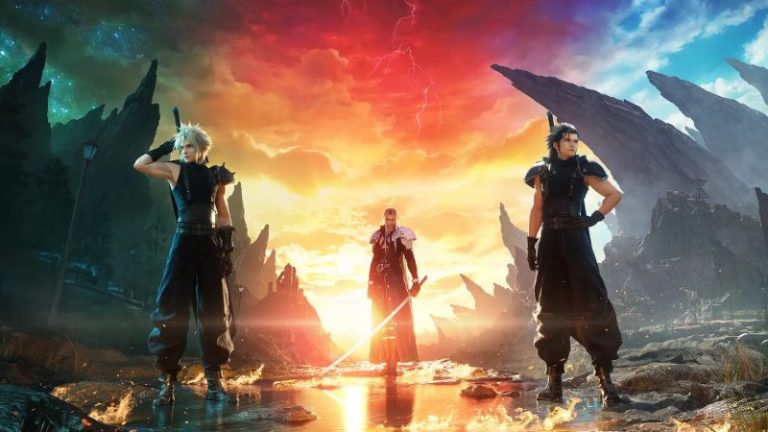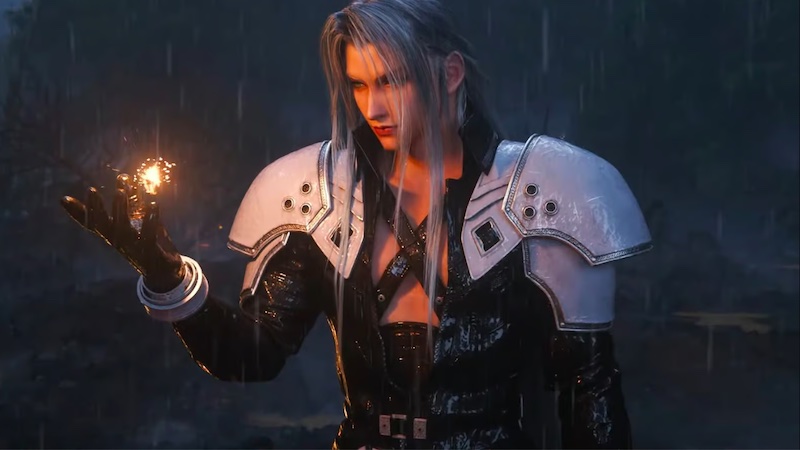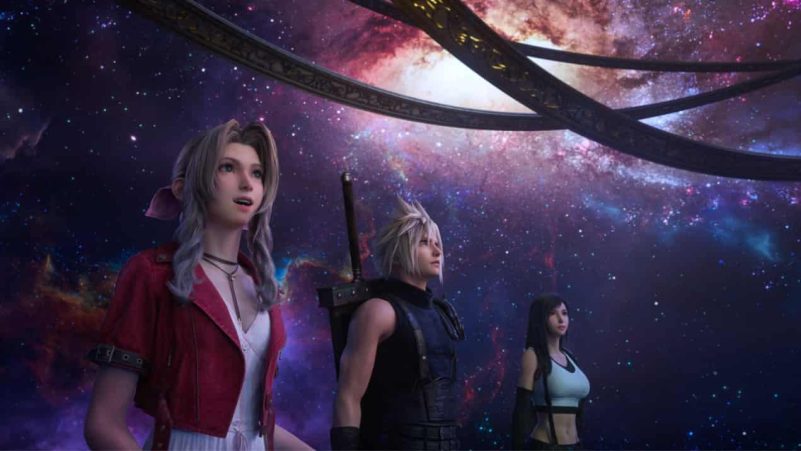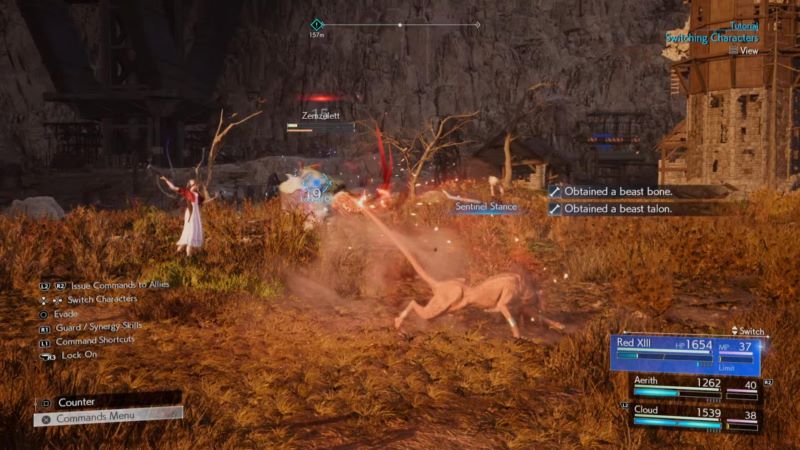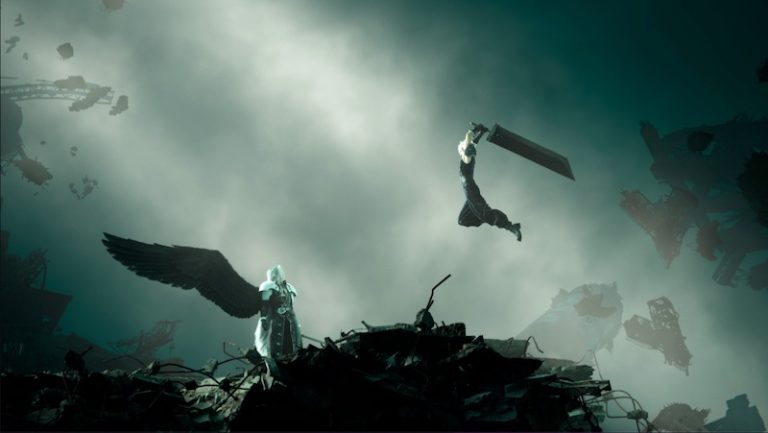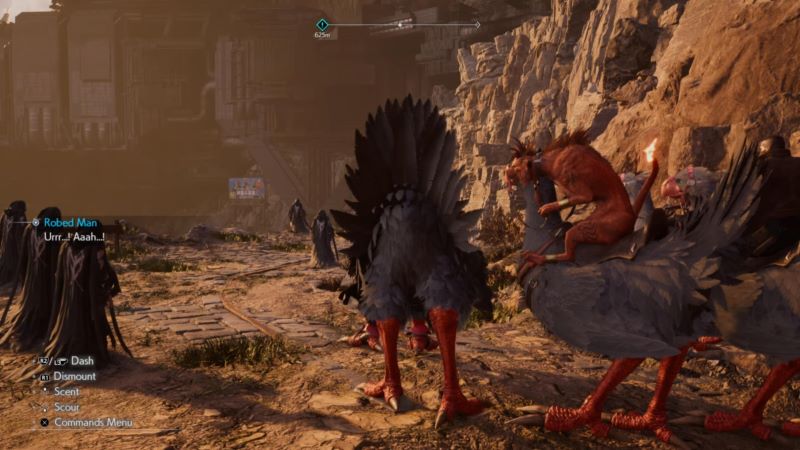Final Fantasy VII Rebirth PS5 Review – Final Fantasy VII Remake, the first game in Square Enix‘s FFVII remake project, set the bar for what to expect with the next two games: high quality visuals with an expanded storyline and engaging combat. After playing the demo, you already know that Final Fantasy VII Rebirth continues that standard in the game’s early hours. The real question is if that same standard is maintained all the way to the credits.
Apart from the potential for mild spoilers in Rebirth, let this serve as a warning that this review may also include spoilers, either major or minor, from Final Fantasy VII Remake.
Final Fantasy VII Rebirth Review (PS5) – A Continued Reimagining Worthy Of Its Namesake
The ending to Remake left us with quite the cliffhanger, with the added benefit that we knew from the original game where Rebirth likely plans to go. In a lot of ways, the path through the game stays to the base story path from the PS1 classic. Still, much like Remake, some things weave themselves into the fabric of the game that are brand new to this series.
The gang finally leaves Midgar in search of Sephiroth. The path they follow is littered with the pale, robed people, each one with a number tattooed on a shoulder, who also pursue the iconic silver-haired villain. To be expected, wherever these robed people go, trouble isn’t too far away. The more robed people you find, the more you learn about who they are and why they act the way they do. In fact, these robed figures play a much bigger part of the story this time around.
Much like Remake, Rebirth takes extra time to explore new areas, plot lines, and backstories across the board. These games take the time to deliver what it wants you to see without rushing or summarizing. You are never rushed into an encounter or scenario but instead eased into them with foreshadowing, anticipation, and excitement. Rebirth also makes some nice callbacks to Remake with some returning characters as well as references to past experiences.
Sights and Sounds
I have a confession to make that surprised me: I inadvertently played through the entire game on Graphics Mode. I was so amped to jump into the game that I just glanced over the beginning settings and started playing. In fact, I thought I had been playing in Performance Mode the entire time.
With that said, there are still some graphical compromises in play, even in Graphics Mode. Characters and monsters remain untouched, but many environmental textures take a noticeable dip in visual fidelity. In most cases, they are easily forgotten or ignored because the important or focal points always feature excellent detail. Things like cave walls and basic walls, however, do not share the same quality. Again, this is strictly a nitpicking point that I didn’t notice often except when I went looking for it. Cave walls were the one major outlier, which regularly featured lower detail than almost everything around them.
There’s an interesting truth in there. After turning on Performance mode, the frame rate shoots up and every visual aspect of the game just flows across the screen. After a while of slaying monsters and hoovering up collectibles and unlocks, I switched back to the Graphics setting. That switch is a bit jarring and just a touch like a stutter. However, after a minute or so, I was right back to enjoying the game as I had the previous 40 hours.
This time, though, I played wilfully ignorant to the frame rate simply because the difference does not drop enough to take long to adjust to. For a bit of context, I also played Remake with Graphics settings on for my story playthrough. I did ultimately switch to Performance mode when I went Trophy hunting, naturally, but that is a different conversation entirely.
All in all, the soundtrack to Rebirth plays reminiscent of the original track list, presenting updated, melodic versions of the iconic songs from the original game. What I found rather amazing is that most of the songs I knew surprised me. By the time I realized what they were, the song was already half over. Mind you, this is meant as a positive because the track list accompanies the environments and situations so well, and the updated versions accompany these situations so well that you get taken in by the entire experience before the pieces start to show themselves to you.
In contrast, one song stood out above the rest: the theme song to the game, “No Promises to Keep.” This song already accompanies trailers, so you have likely heard it already. However, when put into the context of the game, this song pulses with a fabulously potent energy. Further still, the song, its style and presentation, harkens back to those beautiful Final Fantasy main themes from the late 90s to early 00s. “Melodies of Life” from Final Fantasy IX and “1000 Words” from Final Fantasy X-2 will forever elicit an emotional response out of me, and “No Promises to Keep” will likely join them in that short list of beautiful themes to do so.
Perfect Synergy
The foundations behind combat remain relatively the same in Rebirth. D-Pad lets you jump between characters, trigger buttons let you make quick commands for allies, and you break enemy defenses to do massive damage to them. You also adjust your materia and equipment layout beforehand to maximize your success in battle. If you haven’t played Remake, feel free to jump over to our Final Fantasy VII Remake review and Intergrade review for more specifics on combat.
With that in mind, Rebirth adds a couple shiny new tools to use in combat. In particular, Synergy Abilities and Synergy Skills see you pairing up party members to execute synchronized moves. Each combination channels the personalities of the characters involved, adding flair to the abilities. These also inflict damage similar to Limit Breaks, which helps make combat even more frenetic and in your control.
Specifically, Synergy Abilities generally execute attacks while Synergy Skills provide defensive or supportive moves. Others provide group protection for a duration or even increased Active Time Battle (ATB) recharge as well as an extra ATB bar. This additional control over combat truly expands on an already wonderful battle system. In addition, these Synergy moves don’t cost any ATBs. They just require both characters to be on the field and not be incapacitated or mid-animation with another move.
These skills and abilities come from the leveling tree in Rebirth. The Sphere Grid from Final Fantasy X acts as the best comparison, but Rebirth simplifies that formula. Only 20 or so nodes make up these grids, and most of them provide either Synergy Skills or Abilities, with the occasional stat boost here and there. These can be changed as you go, providing you with another way to strengthen your characters. Compared to the leveling system in Remake, this one presents everything you need in a more straightforward manner.
Just as an aside: My biggest knock against combat itself is one that I’m on the fence about and one that carries over from Remake. Using certain abilities and Limit Breaks allows you to automatically move a certain distance on the battlefield in order to hit a target with those attacks. At the same time, not all actions move you across the battlefield as far as others, particularly Limit Breaks. With the addition of Synergy Abilities, misusing abilities and limits are much easier to overcome.
This is a balancing act that this series of games performs, finding a sweet spot between universal gameplay and complex combat. Harder difficulties see the payoff that comes with truly learning the nuances of the systems on offer. On harder difficulties, these limitations don’t feel cheap because the game asks far more of you on all fronts in order to succeed. When playing on easier difficulties, things like this end up feeling like a hinderance when everything else accommodates you more. All in all, though, Rebirth empowers you with fantastic, action-packed combat while still demanding that you make your decisions wisely.
The new characters bring a bit more variety to the game without making things more complicated. Truth be told, they provide much of the same experience that Tifa and Yuffie do. The biggest differences are how they combo. With Red XIII, he builds up a Vengeance bar that lets him inflict bigger hits, but you need to do certain things in combat to build up that bar. With Cait Sith, you can fight with or without your companion, adding a little extra control to the fight.
Diversions From The Narrative
Where Remake had a fair few mini-games, Rebirth doubles down on them. This may seem like a lot to throw in, but these mini-games play so well that you enjoy them in and of themselves. To boot, they freshen up the formula as you go along, a tactic that keeps you coming back for more. Some of these play like those from Remake, but several provide a brand new experience to this series. For the sake of minor spoilers, I’ll avoid detailing those from later in the game, which differ themselves from those in Remake.
On that note, the one game I will mention is Queen’s Blood, a card game you can play against NPCs throughout the game. The playing field has three rows and five columns, with each row keeping count of how many points you earn on that row. Each card requires a certain amount of pawns on each block before you can place that card, and your cards can place pawns on nodes so you can set stronger cards on the field. Each card adds its own point value to your score.
This is not a game of holding the highest score in most of the rows. Instead, you only add points to your total if you hold more points in that row than your opponent. Theoretically, you can win by having 20 points in one row when your opponent has 12 in total between two rows. Much like many Final Fantasy card games before this, Queen’s Blood is a game of controlling the battlefield. Until I earned stronger cards, this game frustrated me simply because your enemies have just slightly better cards than you do.
Early on, any advantage holds substantial weight and makes it challenging for you to win. After a couple wins, you feel empowered and want to challenge more and more players. As a long time fan of Final Fantasy as well as the card games it features, Queen’s Blood makes a strong impression, even among the great card games found across this franchise.
Explore the World
Just like Remake, each major location provides you with several side quests. These all expand on the circumstances of each place and provide even more context to what happens there. Of course, these can be easily skipped if you just want to play through the main story. However, some good information and content hides behind those side quests that you may not want to miss. Even better still, especially for fans, characters, themes, and locations all receive more love and attention than they got in the source material. In a lot of ways, Nomura and Co. use opportunities like this to provide little insights into and hints about long-standing fan theories about the game. Rebirth does not dull the experience with its side content.
In fact, some side quests unlock easier ways to get from place to place. Particularly in open areas, some of these quests ask you to wrangle a Chocobo, which you can then use in that zone. You cannot just catch one Chocobo right away and use it wherever you go. Each area needs its own Chocobo wrangled before you get to ride around with these wonderful creatures.
On that note, getting around the larger areas via Chocobo proves far too handy to ignore. Compared to Remake, several of the open world areas are massive and ask you to run long distances to pass through them. Without a Chocobo, running those distances takes so long without much to do. The game sprinkles enemies around the map, and you also find occasional collectibles and events along the way, but the game really spreads these out away from each other.
There are many things to find, but finding all of those things on foot asks too much of you. Take the time to unlock Chocobos in each area. You will not regret it. This proves doubly true if you plan to unlock everything. In fact, doing so awards you with points used to develop more sophisticated materia, such as elemental combinations that let you use fire and ice with just one materia. The open world side of the game can initially feel a bit like the Ubisoft open world formula, but the rewards that you earn and the events you come across are all much more significant to the world and your experience than anything that Ubisoft games offer.
Welcome Refinement to An Already Polished Experience
There are a lot of risks involved with remaking such a beloved franchise, but Tetsuya Nomura and Co. are charging full speed ahead and putting together a fantastic reimagining of a classic title that brought thousands of people into gaming in the first place. Final Fantasy 7 Rebirth is nothing short of special. Combat now provides an even more empowering experience with more control than ever, and the narrative takes what made it great in the first place and expands it, allowing each portion enough time to develop organically. You can’t go wrong with this instant classic.
Final Fantasy VII Rebirth is due out on February 29, 2024 for PS5.
Review code kindly provided by publisher
Final Fantasy VII Rebirth Guides:
